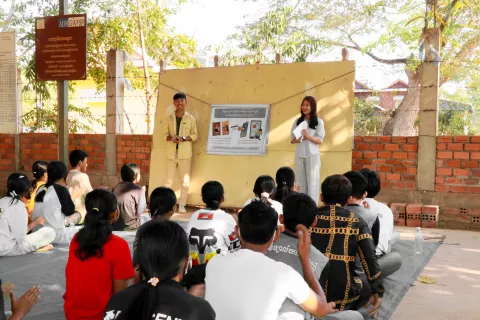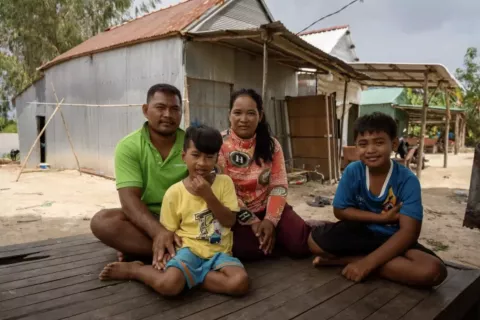Click here to watch our Faces of Wasting videos showing the journeys to recovery of children in Cambodia, Indonesia and the Philippines.
Wasting, also known as acute malnutrition, is when a child’s weight is too low for his or her height.
“Children suffering from wasting are some of the most vulnerable children on the planet. They are the poorest of the poor, the youngest of the young, and often left behind by mainstream development. Without treatment, they are at extremely high risk of dying.”[1]
The signs of wasting are not always obvious. Many children with wasting are desperately thin, but others suffer symptoms that are less visible at first glance, such as, frequent infections, swelling on both legs, and developmental delays.

No matter how its symptoms manifest, wasting is a life-threatening condition that requires urgent attention. Children who suffer repeated episodes of wasting are less likely to achieve their full height or development potential. They become part of a vicious cycle where future generations are also at risk of malnutrition, limiting economic and social potential and progress of the country.
Unlike stunting, where some good progress has been recorded in the East Asia and Pacific region, the reduction of severe and moderate wasting has been slow. Figures from 2021 show that 3.7 per cent of children in the region are wasted, with 1.4 per cent of those suffering from severe wasting. In absolute numbers, this translates to 5.7 million children with wasting, of which 2.2 million are severely wasted.[2] Yet growing poverty and inequality, conflict, climate change, escalating costs of living and the impacts of COVID-19[3] are stalling progress made in recent years, as highlighted in a recent UNICEF Child Alert on wasting.[4]
Wasting results from the failure to prevent malnutrition among the most vulnerable children; it occurs not only in famine, war and times of crisis, but also in everyday life. Regular infections from preventable childhood diseases, such as diarrhoea, pneumonia, measles, and malaria, reduce children’s ability to fight diseases. And lack of access to good quality food and safe drinking water can weaken children’s immune systems and prevent them from absorbing the nutrients they need. Infants are particularly vulnerable to wasting when breastfeeding is disrupted or when solid foods are introduced too early or too late.


Wasting is a preventable condition. With good nutrition and health care for pregnant women, breastfeeding support, and nutritious foods and clean water, we have the power to prevent wasting before it starts and set every child on the path to survive and thrive.
When prevention falls short, wasting is treatable. Care can be provided to children at health facilities close to their home, making access easier for busy caregivers who often work long hours to provide for their families. The challenge is finding children with wasting as early as possible – before they develop complications. Training family members and health workers to identify children with wasting – for example, by measuring their arms using a simple measuring tape and testing the feet for swelling – has led to much prompter referrals for wasting, before children become very sick.

Nine countries in the region have introduced services and strategies for the early identification of child wasting and have begun incorporating treatment into primary health care services. Their governments should be congratulated for responding – and other countries should be encouraged to prioritize action on the crisis of wasting.
The solutions to prevent, detect and treat child malnutrition are well known. And with adequate investment and collaboration – and political will – these solutions can be taken to scale. This will put countries in East Asia and the Pacific back on track towards ending malnutrition for good.
Mueni Mutunga is a Nutrition Specialist at UNICEF EAPRO
[1] UNICEF. No Time to Waste. 2021. https://www.unicef.org/documents/no-time-waste
[2] WHO, UNICEF, the World Bank. Joint Malnutrition Estimates (JME). 2021. Joint child malnutrition estimates (JME) (UNICEF-WHO-WB)
[3] UNICEF. Safeguarding Children’s Access to Good Diets, Services, and Practices in East Asia and the Pacific. During the COVID-19 Pandemic: An Overview of UNICEF’s Nutrition Response. January 2022. https://www.unicef.org/eap/reports/safeguarding-childrens-access-good-diets-services-and-practices
[4] UNICEF. Child alert: Severe wasting. May 2022. https://www.unicef.org/child-alert/severe-wasting






